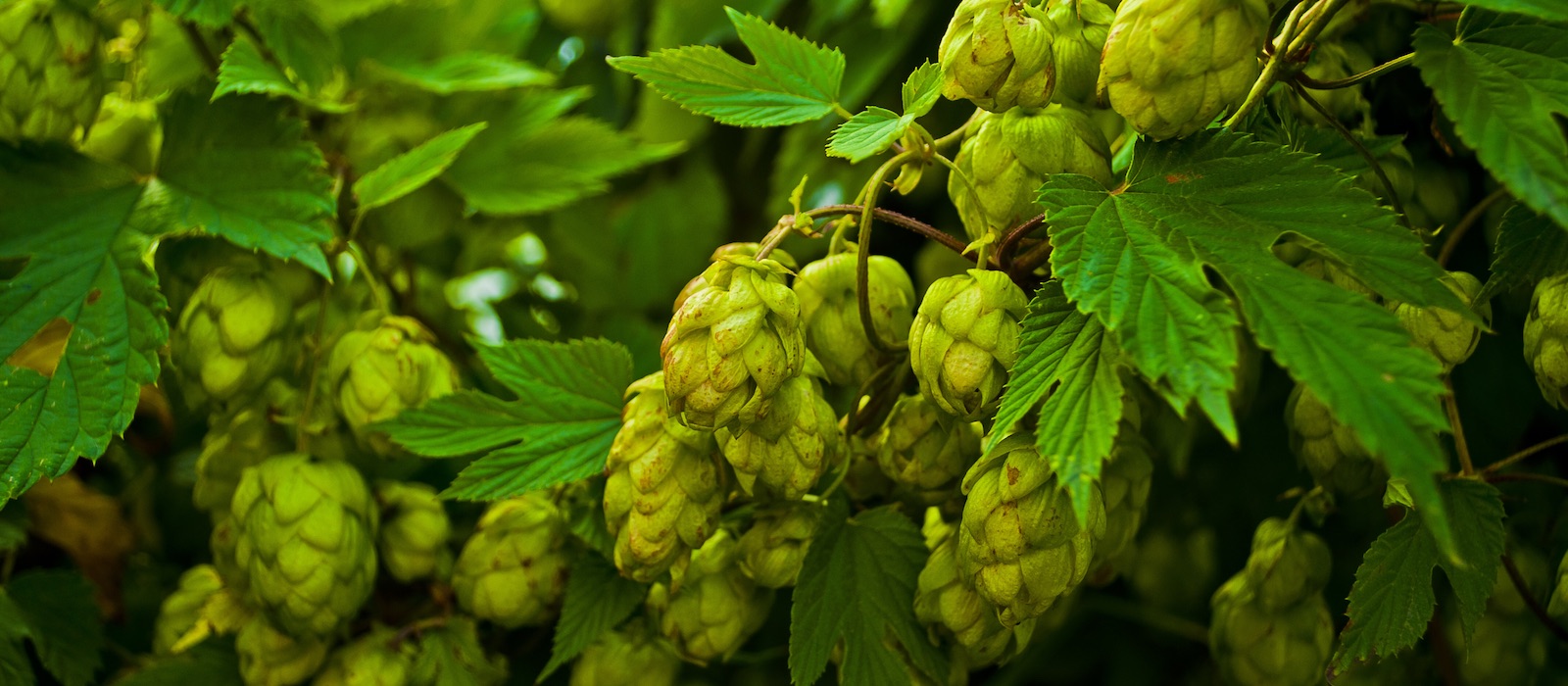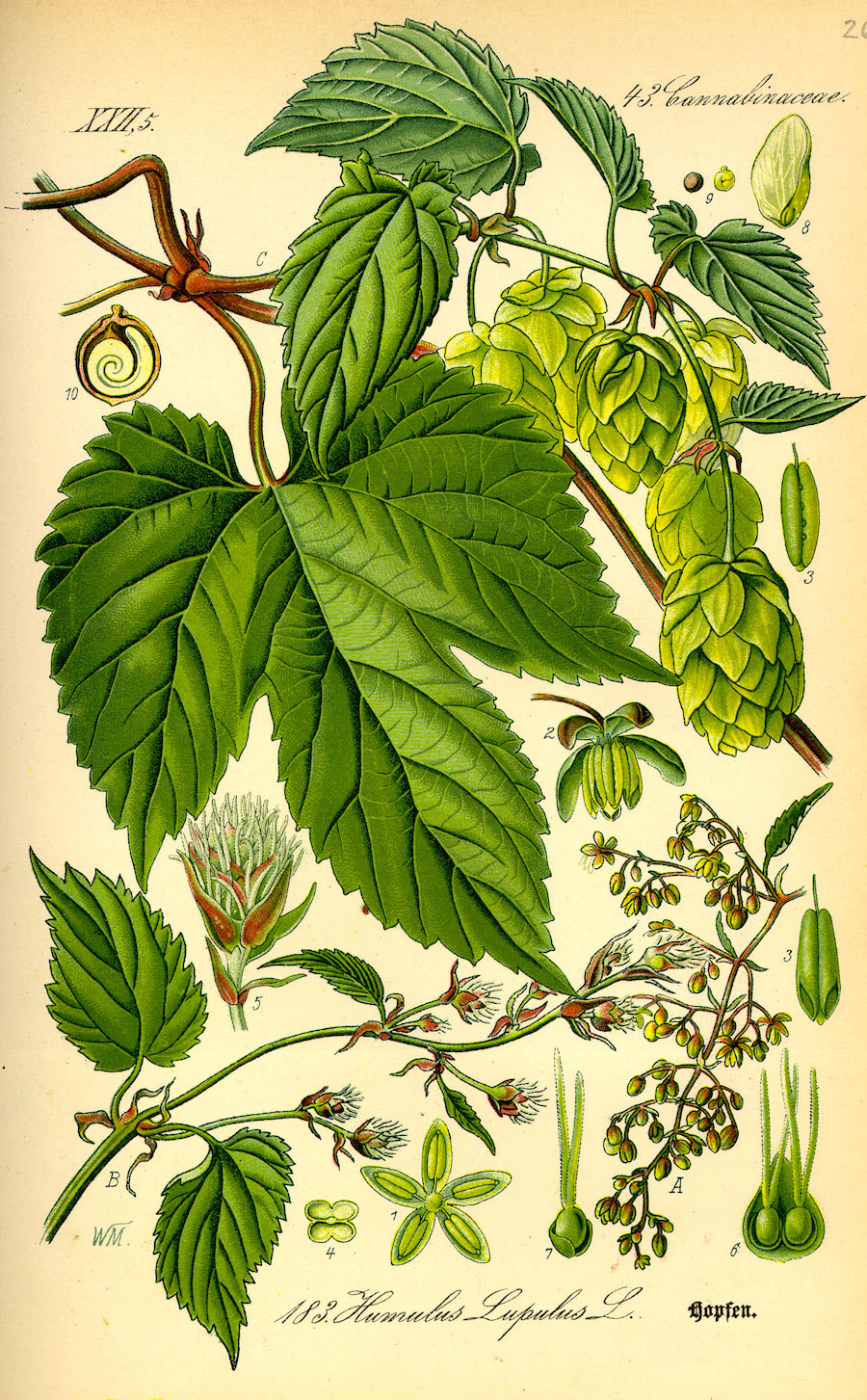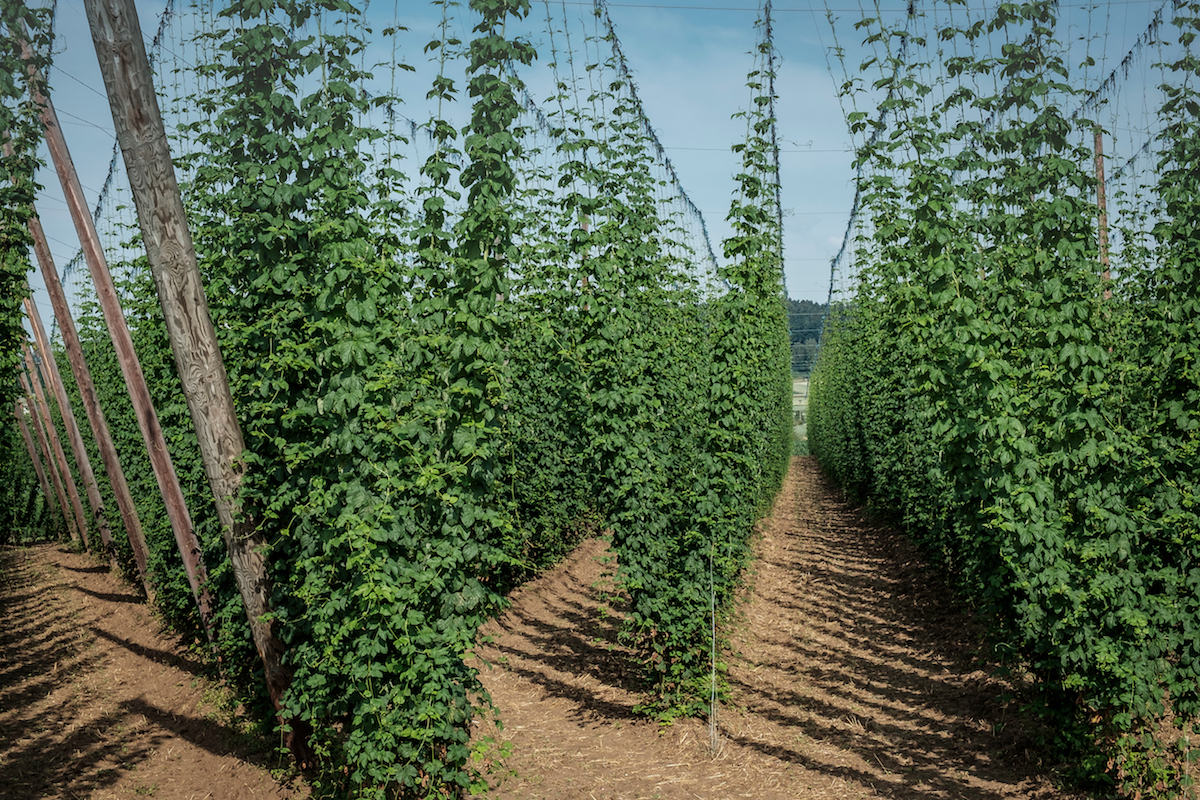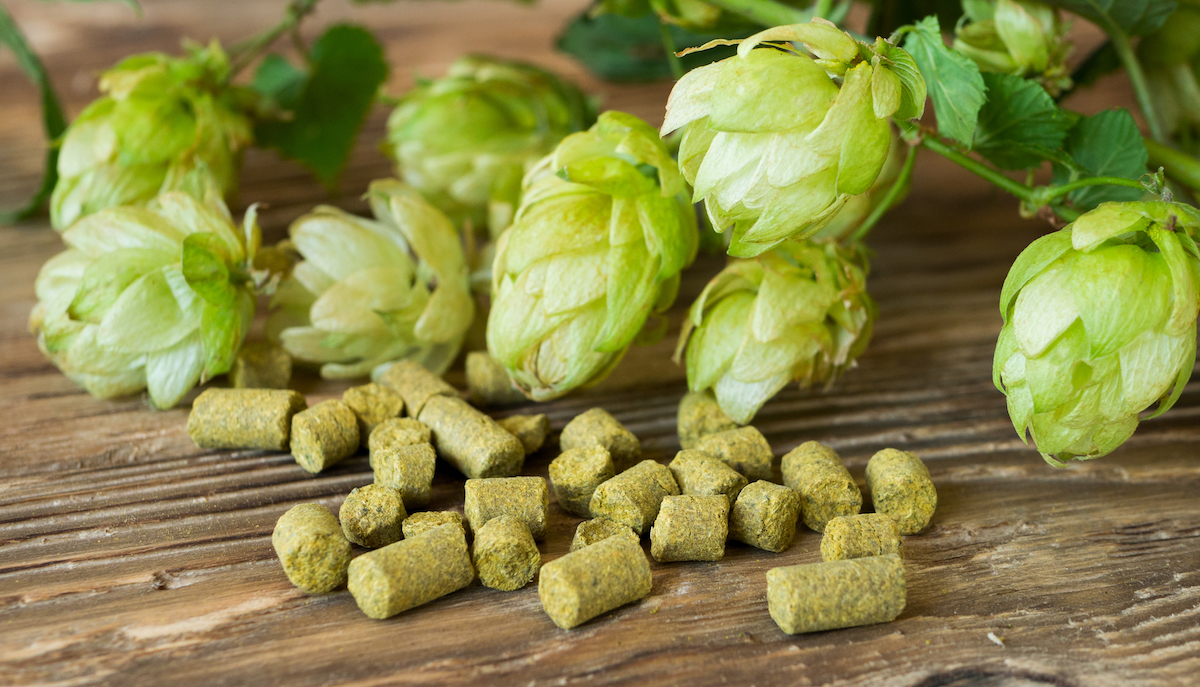- Hop (Humulus lupulus) is one of the main ingredients used in brewing.
- Hop flowers give beer its characteristic aroma and bitterness, and are also responsible for balancing taste.
- A lesser known fact is that hop shares biological characteristics with cannabis. Still, both plants have actually the same origin.

It is a well-known fact that Humulus lupulus (hop) and Cannabis Sativa (cannabis) have very similar organoleptic profiles. But could this be indicative of a common ancestry? The possibility of a link between the plants started to be contemplated in the 1940s, but was not confirmed until the 1990s. Still, their belonging to the same taxonomic family was yet to be scientifically proven.
The hypothesis was confirmed in 2002 by a team of British and American biologists who analysed the genes of a selected group of plants, concluding that both species belong to the Cannabaceae family, which consists of 170 different species characterised by their distinctive flowers.
The leaves of plants in the Cannabaceae family are typically lobed and grow from a common node, like the fingers on a hand. Another distinctive feature are the stipules, leaflike structures borne in pairs at the base of the leafstalks. Even if cannabis and hop split from their common ancestor some 27 million years ago, evolving into two different species, the serrated, irregular edges of the leaves are strikingly similar.
Similarities and differences
The similarities between cannabis and hop are not limited to the leaves. Just like cannabis, Humulus lupulus has distinct male and female individuals, a phenomenon known as dioecy, and only the female flowers (commonly known as hops) are used in brewing. Needless to say, the species exhibit some morphological differences too:
- While hop plants grow as vines that climb clockwise, cannabis plants grow as bushes. Lupulus is in fact the diminutive of lupus, wolf in Latin, which alludes to the fact that the plant's flexible stems wind around trees as if strangling the trunk.
- Individual hop vines typically grow up to 12 metres long, while taller cannabis plants do not exceed 5-6 metres in height, a size that is only reached under optimal growing conditions.
- Cannabis budsare much denser and thicker than hop flowers, which consist of tiny, green, almost translucent petals. These grow as strongly branched spikes surrounded by reddish/yellowish glandular structures which give the plant its distinctive bitter flavour.
- Native to Eastern Europe and Western Asia, hop is grown in temperate climates, in rich, deep soils with water holding capacity and sheltered from the wind. Highly resistant to cold temperatures, countries like Germany and the Czech Republic are amongst the world's leading producers of hop.
The role of hop in brewing
Once harvested, hops are typically dried and added to a sweet liquid (must) made from malted cereals such as barley, were they are boiled and left to cool before the yeasts are added to produce fermentation.
Hops contain humulones (alpha acids), a compound with antibiotic properties that help preserve beer for longer. When hops are boiled in the must, humulones are converted to isohumulones, giving beer its characteristic bitterness. Beta acids, instead, are responsible for the aroma.
Because these compounds break down at high temperatures, hops containing high levels of beta acids are added towards the end of the boiling process. It is the varying contents of humulones and beta acids in hops strains that make flavour and aroma differ so greatly from beer to beer.
Other characteristics of hop
- Besides being the best-known ingredient in beer, hop is highly appreciated for its medicinal properties, and has been widely used historically as a tranquiliser, as an anti-inflammatory, as a remedy for indigestion, insomnia and diarrhoea and even for treating a number of psychological disorders.
- The sleep-inducing effect is not the only medicinal benefit shared by hop and cannabis. According to recent studies, both plants have strong antibacterial and anti-carcinogenic properties.
- Another shared characteristic is that both hop and cannabis are rich in terpenes and terpenoids, which give off aromas of fruit, resin, pine and earth, among others. These, however, tend to be more enticing in cannabis plants. Terpenes account for up to 3-5% of the dry mass of both female hop and cannabis flowers.
- The main bitter compound in hop, humulones or alfa acids, and the main active ingredient in cannabis, tetrahydrocannabinol, are both terpenoids, a derivative of synthesised terpenes that is produced as a result of the drying and curing of the flowers.
- Likewise, both plant species are typically attacked by the same pests – e.g. aphids and red mites – and by the same fungi – e.g. downy mildewand powdery mildew.
- Similar looking seeds and pollen are another indicator of the family ties between cannabis and hop. These similarities make it difficult to differentiate between the fossilized remains of the two species. Still evidences show that the plants were first used by man some 10,000 years ago.







Comments from our readers
There are no comments yet. Would you like to be the first?
Leave a comment!Did you like this post?
Your opinion about our seeds is very important to us and can help other users a lot (your email address won't be made public).